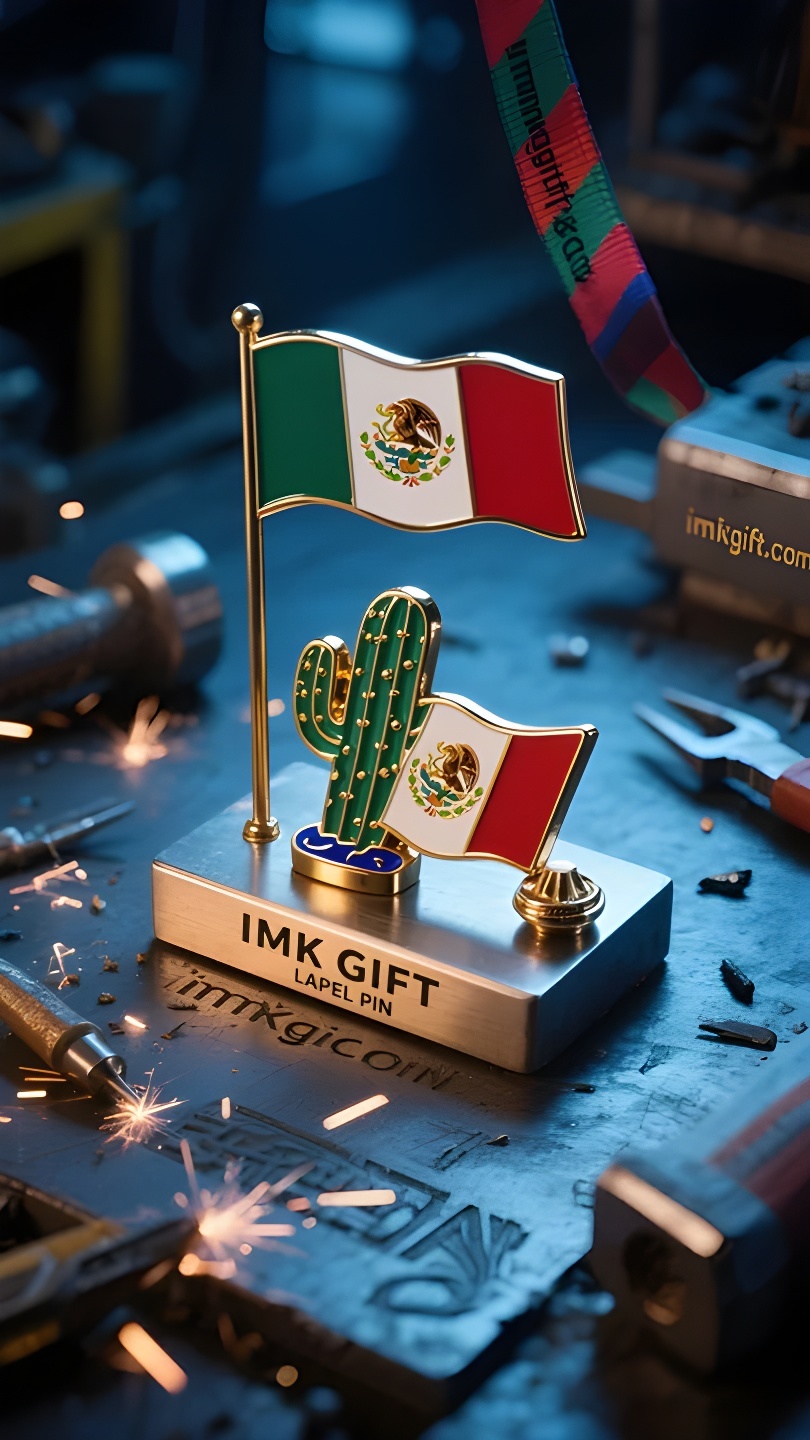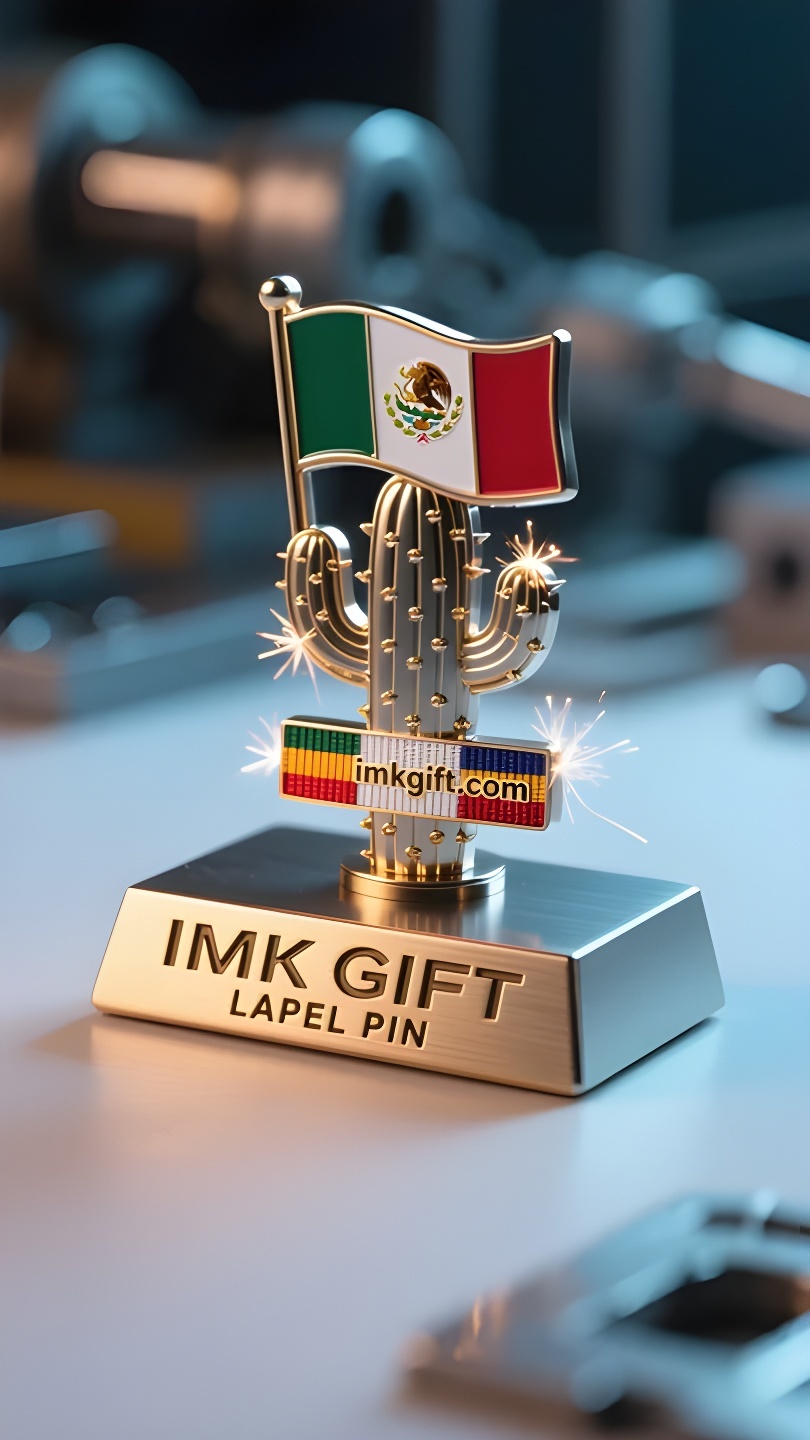in993-La-columna-vertebral-inquebrantable-El-alma-mexicana-en-el-pisapapeles-de-cactus
▼
El tótem del águila y el cactus en el centro de la bandera mexicana representa la antigua profecía de los aztecas: “Eligen vivir en lugares peligrosos”. Cuando la imagen del águila sosteniendo una serpiente y de pie sobre el cactus se convierte en el emblema de la bandera nacional, la valentía para arraigarse en situaciones desesperadas también se integra en la esencia de los mexicanos. En las tiendas de recuerdos de la Ciudad de México, los pisapapeles de bronce con forma de cactus son una compra obligada para los turistas. Estos pesados productos de metal tienen la forma de cactus y el escudo nacional está grabado en la base. El peso físico del pisapapeles es como el peso de la historia: los cactus pueden crecer en las grietas de las rocas y sus raíces perforan las duras rocas volcánicas; el bronce solo se forma tras fundirse a miles de grados, al igual que México se ha visto templado por la colonización, la revolución y los terremotos. El escritor mexicano Paz dijo: “Nuestra historia es una eterna lucha contra la gravedad”. El significado del pisapapeles de cactus es precisamente este: es necesario mantenerse erguido en la pobreza como un cactus y proteger el cimiento cultural con la solidez del bronce. Al presionar este tipo de pisapapeles sobre las páginas de un libro, no solo se presiona el papel, sino también la expectativa de “nunca ser aplastado por la realidad”. Así como los jóvenes héroes del Castillo de Chapultepec usaron sus cuerpos para resistir el fuego de artillería, los mexicanos modernos también usan la fortaleza de los pisapapeles para resistir el huracán de los tiempos. Este septiembre, cuando los vítores del Día de la Independencia resonaron en la Plaza de la Constitución, los pisapapeles de cactus sobre los escritorios nos decían en silencio: la verdadera libertad nunca está en cantar en los buenos tiempos, sino en aprender a florecer como flores espinosas en la roca del destino.
The eagle and cactus totem in the center of the Mexican flag carry the ancient prophecy of the Aztecs that “they choose to live in dangerous places”. When the picture of the eagle holding a snake and standing on the cactus becomes the emblem of the national flag, the courage to take root in desperate situations is also integrated into the spiritual blood of the Mexicans. In the souvenir shops in Mexico City, bronze paperweights in the shape of cacti are a must-buy for tourists. These heavy metal products are designed in the shape of cacti, and the national emblem is engraved on the bottom. The physical weight of the paperweight is just like the weight of history – cacti can grow in the cracks of rocks, and their roots pierce the hard volcanic rocks; bronze can only be formed after being melted at thousands of degrees, just as Mexico has been tempered by colonization, revolution and earthquakes. Mexican writer Paz once said: “Our history is an eternal struggle with gravity.” The meaning of the cactus paperweight is just this: it must stand tall in poverty like a cactus, and at the same time, it must guard the cultural foundation with the thickness of bronze. When people press this kind of paperweight on the pages of a book, they are not only pressing down the paper, but also their expectation of “never being crushed by reality”. Just like the young heroes in Chapultepec Castle used their bodies to resist the artillery fire, modern Mexicans are also using the fortitude of paperweights to resist the hurricane of the times. This September, when the cheers of Independence Day resounded through the Plaza de la Constitución, the cactus paperweights on the desks were silently telling us: true freedom is never singing in good times, but learning to bloom thorny flowers on the rock of fate.
墨西哥国旗中央的雄鹰与仙人掌图腾,承载着阿兹特克人”择险地而生”的古老预言。当雄鹰衔蛇立于仙人掌之上的画面化作国旗纹章,这份在绝境中扎根的勇气,也融入了墨西哥人的精神血脉。
在墨西哥城的纪念品商店里,仙人掌造型的青铜镇纸是游客必购之物。这些沉甸甸的金属制品被设计成仙人掌形态,底部铭刻着国徽图案。镇纸的物理重量恰似历史的重量——仙人掌能在岩缝中生长,根系刺穿坚硬的火山岩;青铜经千度熔炼方能成型,正如墨西哥历经殖民、革命与地震的淬炼。
墨裔作家帕斯曾说:”我们的历史就是与重力的永恒角力。”仙人掌镇纸的寓意正在于此:既要如仙人掌般在贫瘠中挺立,又要以青铜的厚重守住文化根基。当人们将这种镇纸压在书页上,压住的不仅是纸张,更是对”永不被现实压垮”的期许。就像恰普尔特佩克城堡的少年英雄们以肉身抵挡炮火,现代墨西哥人也在用镇纸般的定力对抗时代的飓风。
这个九月,当独立日的欢呼响彻宪法广场,那些摆在办公桌上的仙人掌镇纸正默默诉说:真正的自由,从不是在顺境中歌唱,而是学会在命运的磐石上开出带刺的花。
▼
Contact Us
📞 Tel: +0086-760-85286839
📧 Email: sales3@imkgift.com








